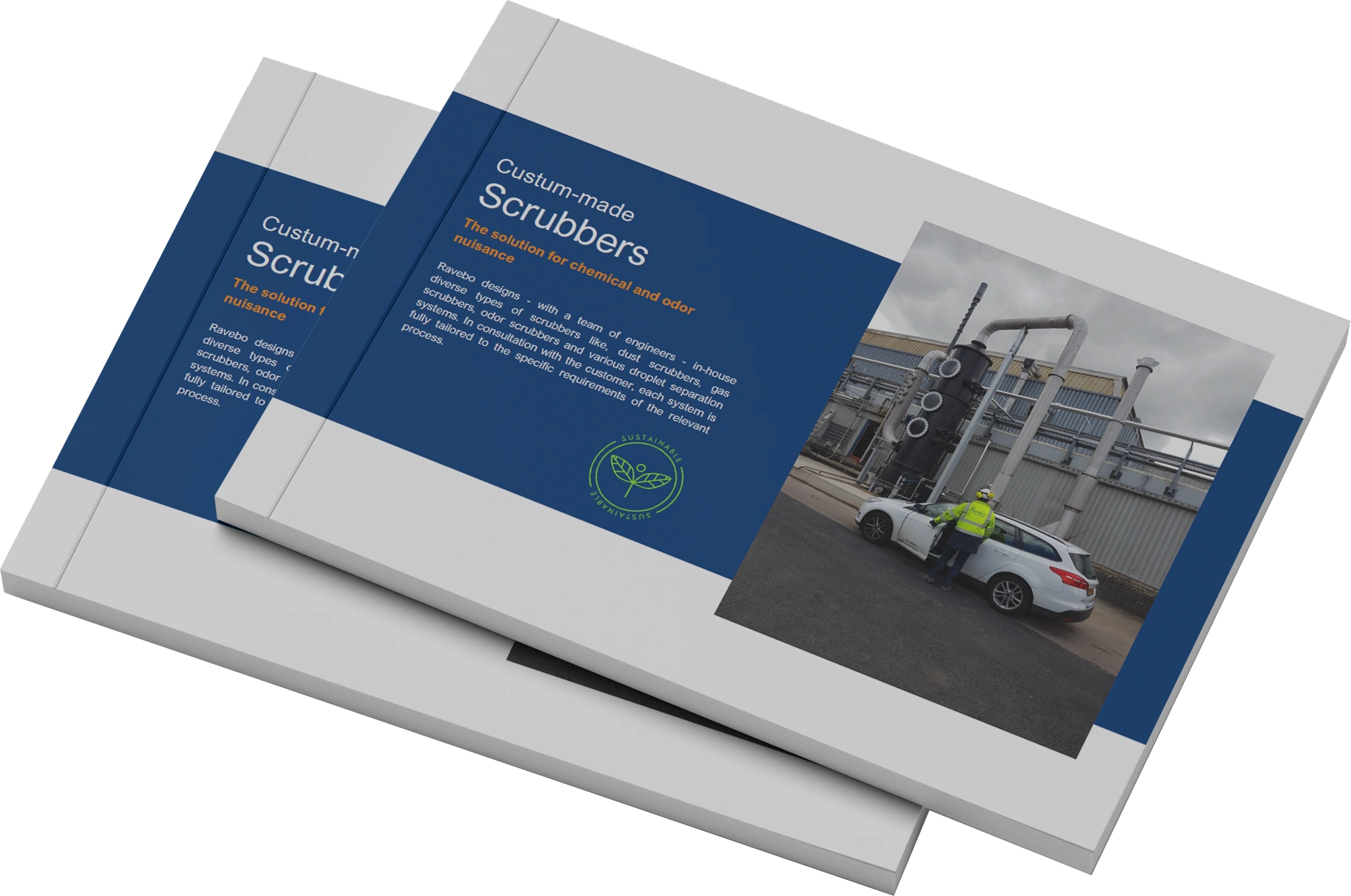
Wastewater Treatment Odor Mitigation
Fundamentals of Wet Scrubber Technology for Odor Control
Customised advise from one of our specialists.
Fill in the form below and we will contact you as soon as possible.
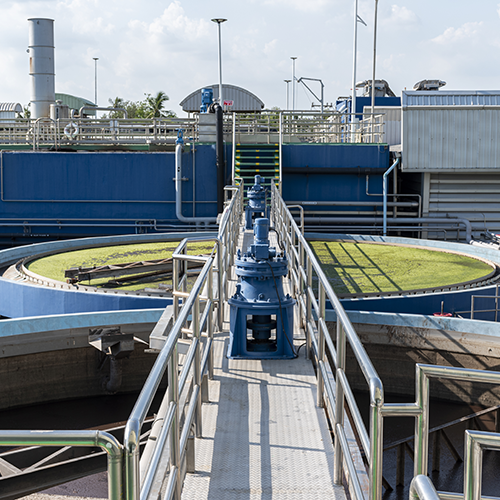
Innovative Approaches to Channeling Odorous Fumes to Scrubbers
Addressing Odor Emissions in Wastewater Treatment Facilities

This article provides an overview of the fundamental principles behind wet scrubber systems and their role in mitigating odors in wastewater treatment. Additionally, it presents an examination of the most effective and dependable approach for channeling noxious fumes to the scrubber systems.
In spite of the fact that numerous wastewater treatment plants continue to employ traditional methods that have been in use for decades, there is a growing trend towards adopting a wider range of water treatment technologies. This shift aims to enhance both the quality of water and the purity of the air surrounding these facilities. This article introduces the basics of how wet scrubber systems support wastewater treatment odor control and offers a look at the best and most reliable method for directing odorous fumes to the scrubber systems.
While some wastewater treatment plants still adhere to traditional methods that have been in use for generations, others are adopting a more diverse range of water treatment technologies. This shift is aimed at enhancing both water and air quality. In any wastewater treatment facility, offensive odors can arise from the various processes involved. The primary and secondary treatment systems, as well as biosolids-processing facilities, are the main sources of these odorous emissions. As populations increase and communities expand, controlling wastewater odors has become a pressing issue for many waterworks facilities.

Understanding the Impact of Hydrogen Sulfide in Wastewater Treatment
The Perils of Olfactory Fatigue and H2S Exposure

During the early stages of treatment, the wastewater systems focus on settling or skimming large sediments and reducing biochemical oxygen demand (BOD) from within the wastewater. During BOD reduction, microbes, or “bugs”, called sulfate-reducing-bacteria thrive on the sulfate ion (SO4 ) as their source of oxygen for respiration. This process gives off hydrogen sulfide (H2S) which most people recognize as the rotten-egg odor coming from treatment plants.
However, the negative effects of hydrogen sulfide gas extend beyond its unpleasant smell. Its corrosive nature can damage equipment and complicate the treatment process. Many occupational health and safety organizations even caution that H2S is not only highly flammable and explosive, but also poses a serious risk to human health. Exposure to levels exceeding 100 ppm can be toxic and potentially life-threatening, as the gas can burn and produce other harmful vapors and gases, such as sulfur dioxide (SO2).
Prolonged low-level exposure and/ or rapid high-level exposure can result in "olfactory fatigue" which deadens our sense of smell, leaving us unaware of the poisonous gas. This risk alone should provide sufficient reason for implementing dependable air quality and odor control measures like wet air scrubbing into the wastewater treatment process.
Get in touch with us
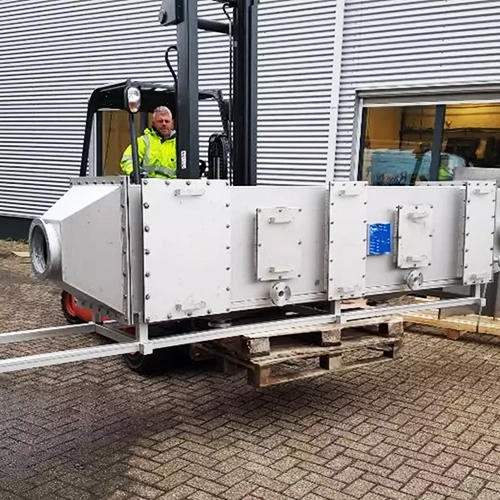
The Mechanism of Wet Scrubbers in Vapor Phase Odor Mitigation
Chemical Process of Solubilizing Pollutants in Wet Scrubbers

Wet scrubber systems are commonly used for vapor phase wastewater odor control in various areas such as wastewater treatment plants, biogas plants and biosolids treatment facilities. The process begins by extracting process-air from the process and directing it towards the scrubber unit. To prevent the release of contaminants before reaching the scrubber, the air is drawn under negative pressure. The use of corrosion resistant stainless-steel or polyethylene (PE) pipes is crucial in ensuring that process gases and gases emitted through diffuse emission of the treatment facility are extracted to the wet scrubbing unit.
Once the hazardous fumes are transported safely, wet scrubber systems are used to convert the vaporous pollutants into a liquid/ condensate solution. This is achieved by spraying chemical additives and water mists into the scrubber, which solubilize targeted pollutants based on their chemical compounds. The resulting liquid is then purified using various chemicals, including sodium hydroxide (NaOH), which is used to remove hydrogen sulfide (H2S) in a two-stage system. The second stage of the scrubber involves a neutral stage to avoid entrainment of chemical particles to the environment. This stage is also used to add fresh makeup water to compensate the evaporation loss and loss of liquid through drainage. This process effectively removes flammable, toxic, and odorous hydrogen sulfide gas from wastewater treatment systems.
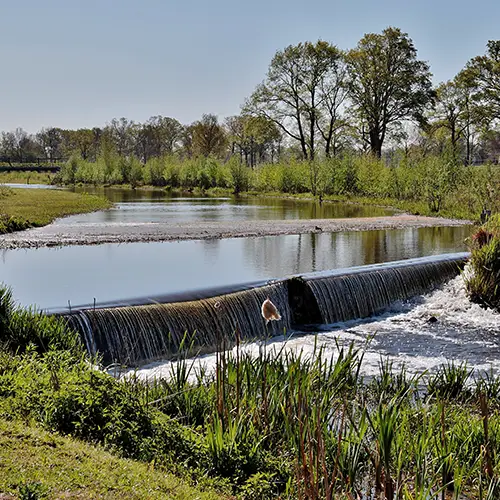
Summary
Enhancing Air and Water Purity in Wastewater Treatment Plants

Wastewater treatment plants are devoting more and more resources to treating polluted air and more advanced wastewater odor control systems are being installed to combat the problem. Scrubbers and associated gas strippers are the ideal technology that wastewater treatment plants use to purify both the air and water before the wastewater is discharged back into our lakes, streams, and rivers for safe reuse.
Game-changing benefits
Discover the game-changing benefits of scrubbers and propel your business forward with our free whitepaper download.
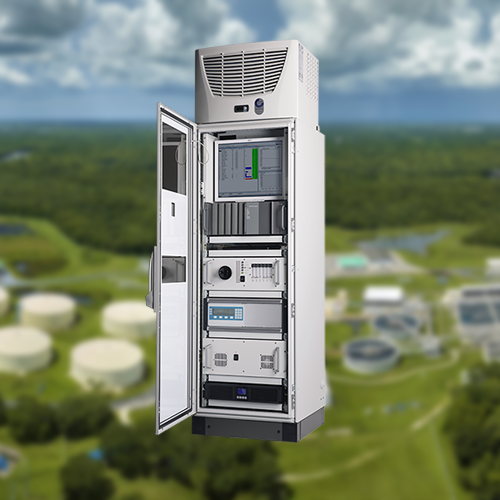
Ravebo Gas Scrubbers: Tailor-Made Solutions for Industrial Emissions
Advanced Features of Gas Scrubbing Technology

Our scrubbers offer an efficient solution for eliminating harmful acid gases, amines, and organic pollutants from exhaust gas. Scrubbers function by introducing contaminated gas to a washing liquid that contains reagents capable of removing the contaminants. The effectiveness of the removal process is regulated by quality measurements of the washing liquid. Ravebo scrubbers are tailor-made and come in a range of sizes, with materials that can be customized to suit specific process conditions.
Gas scrubbers find diverse applications in industries such as wastewater treatment, chemical and pharmaceutical sectors, plastics industry, metals industry, and incinerator installations. Their suitability for these industries stems from their ability to withstand high temperatures and corrosive substances.
Ravebo specializes in providing customized gas scrubbing solutions tailored to your specific requirements. With our extensive experience across various industries, we can showcase reference projects that demonstrate our expertise. Our gas scrubbing equipment comprises open spray scrubbers, utilizing conventional tower and innovative spray nozzle designs. We offer horizontal and vertical scrubbers to cater to different needs. Additionally, our open spray scrubber technology stands out as the only wet scrubbing technology capable of achieving multiple functions. It can utilize a variety of reagents to ensure low emissions across a wide range of industries. Our gas scrubbing solutions offer numerous advantages, such as low maintenance, optional explosion protection, compact design, easily manageable waste stream, resistance to high temperatures and chemical substances. Get in touch with us today to discover more about our offerings and find the ideal gas scrubbing solution for your industry and specific application.
Get in touch with our scrubber specialist
Our gas scrubbers with analyzing systems make it possible to clean various gas flows. This leads to a cleaner living environment and more sustainable production processes. Curious about the possibilities? Our specialists are happy to provide you with appropriate advice.
